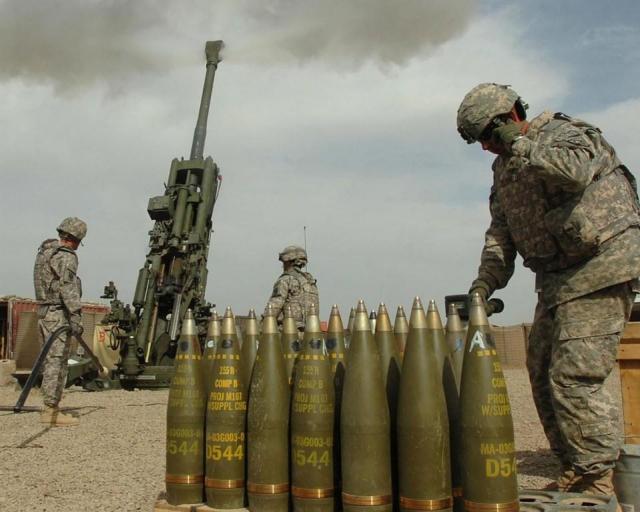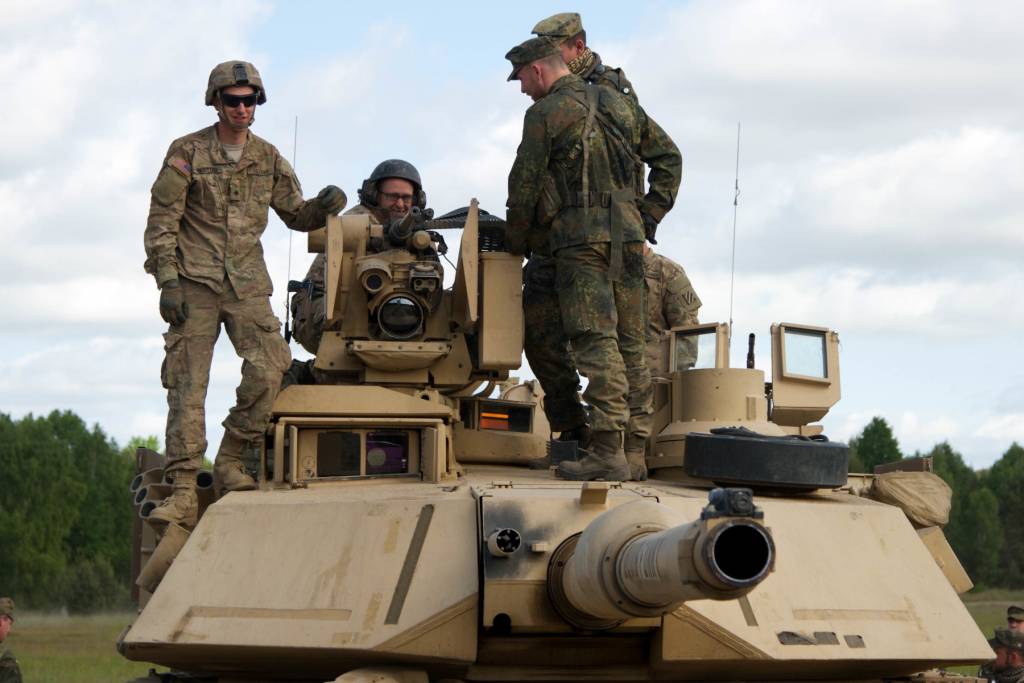Ever since man has waged war, he has sought to unleash devastation on his enemy en masse. No conventional weapon is more capable of delivering mass destruction than artillery. Early artillery were large projectile weapons intended to destroy enemy fortifications (walls, castle turrets & ramparts), like the stone catapult or ballista (heavy mounted crossbow). These heavy weapons were effective against fortresses during medieval times, when armies engaged one another in fierce melee combat. In modern artillery, there are three main categories: Mortars, Howitzers, & Guns.
Mortars are the simplest of the three main artillery types; being short-barreled (in relation to their calibre) and muzzle-loaded only for the most part. They have smoothbore barrels and a fixed firing pin located within the base-plate. The explosive projectile that mortars fire are called “bombs”, contrary to the commonly-used “shell”. Mortar bombs are caseless munitions as cartridge cases prevent them from being dropped down the muzzle. These bombs have self-contained propellant charges in the base of the munition (where the fins are located), which ignite upon impact with the firing pin. Another distinct characteristic of mortars is that they possess a steep firing angle of 45-85 degrees of elevation, with the near-vertical angle used for landing bombs at close range. Mortar bombs usually have thinner walls than artillery shells due to their relatively low muzzle velocity and lack of spin. This enables the bombs to be filled with a larger payload volume; a 120mm mortar bomb produces enough explosive force to equal a 155mm howitzer shell, resulting in the same or even wider kill radius as a heavy artillery piece. Within the mortar category of artillery pieces, there are three classes of mortars, each grouped by calibre. Light mortars are usually 60mm in calibre, while medium mortars are either 81mm or 82mm (81mm being standard calibre in NATO militaries, and 82mm in post-Soviet Union militaries), with heavy mortars being 120mm. Light and medium mortars are man-portable support weapons, while heavy mortars are usually transported or mounted on vehicles. Compared to their larger cousins, mortars are more effective at supporting infantry units due to their portability and ability to engage enemies behind cover or at a lower altitude due to their steeper elevation.
Howitzers are perhaps the most flexible of the three artillery types, and are categorised as the middle class. Howitzers possess considerably longer barrel lengths than mortars, but shorter than artillery guns. Historically, they had smoothbore barrels and were muzzle-loaded, like other early firearms. Modern howitzers have rifled barrels and are breech-loaded; they may be towed by a dedicated vehicle, transported by heavy-lifting aircraft (heli-portable/airlift plane), or even self-propelled (tracked or wheeled carriage powered by diesel engines). Howitzers have two distinct characteristics: Firstly, they use multiple propellant charges for engaging targets at different ranges. Secondly, they possess a firing angle between 20-70 degrees of elevation. Unlike other artillery pieces, howitzers are the only type wherein the shell is separate from the propellant. The solid propellant consists of nitrocellulose-based powder charges (usually combined with nitroglycerin to form a double-based propellant), which are held in waterproof bags to be loaded directly behind the shell in the breech prior to firing. The primer is located in the breech itself and is usually struck by a spring-loaded firing pin (striker). Once loaded, the breech is closed and locked, and the striker is released to fire the projectile. Apart from mechanically-ignited primers, modern howitzers may also use electric and laser ignition in their breech-blocks. Modern howitzer calibres include 105mm, 127mm (5-inch diameter), and 155mm for NATO militaries, while post-Soviet militaries employ 122mm, 130mm, and 152mm calibres. Notable historic examples are the American M114 155mm-calibre towed howitzer and the super-heavy 80cm K (E) railway cannons developed by Nazi Germany (weighing 1350 tons, and had to be moved on twin railroads).
Guns are artillery pieces that are used for direct-fire; whereby the gunners or crewmen have a direct line-of-sight to the target. Out of the three key types, artillery guns have the longest barrel length and usually the highest muzzle velocity. Just like their indirect-fire brethren, artillery guns were historically muzzle-loaded, smoothbore weapons mounted on wheeled carriages. With the advent of metallic cartridge cases in the late 1850s, guns became breech-loaded firearms with rifled barrels, which greatly improved loading times and accuracy. All guns utilise cased munitions, and can fire a variety of projectiles, including ball (referring to a solid projectile, hence the terms “grapeshot” and “cannonball”), sabot shot (smaller diameter projectile held in place by a cup or spindle whose external diameter matches that of the gun barrel’s calibre), explosive shell, tracer shell, or a combination of these types. Another distinct characteristic of guns is that they have a low firing angle with a typical maximum elevation of 35 degrees. The last distinguishing characteristic of guns is that they are capable of firing on the move. Unlike other artillery, guns are unable to employ high-angle fire on targets behind cover or at lower altitudes. Guns can be static (usually part of a fortified position on land, known as a gun emplacement) or mobile/self-propelled (as used in a tank or attack aircraft). Early guns were of 20mm and 37mm calibres (HS.820 and QF-1 autocannons respectively), while most guns used during WWII were 75mm or larger (Nazi Germany employed the devastating 88x571mmR Flak gun as a very effective anti-aircraft & anti-tank gun). Another example is the 40x364mmR Bofors anti-aircraft gun (mounted on both static emplacements and mobile carriages), used by the Allied Forces during WWII against incoming Axis bombers and low-flying fighters. Guns have evolved tremendously with the advance of technology, resulting in 20mm, 25mm & 30mm electrically-fired rotary cannons to 120mm & 125mm smoothbore tank guns, capable of penetrating 25 inches of steel armour. Gun-howitzers combine the characteristics of howitzers (steeper firing angles and separate propellant charges) with that of guns (longer barrel and direct-fire capability), resulting in highly-versatile artillery fire.
To sum up, the three main types of modern projectile artillery are Mortars, Howitzers, & Guns (with rocket artillery becoming more prevalent in developed nations). Mortars consist of a smoothbore tube in which a fin-stabilised bomb is dropped into and fired; with a near-vertical firing angle of elevation. Mortars are used for close-to-mid range, indirect and plunging fire on enemies behind cover or at lower altitudes. Howitzers have a longer, breech-loaded, rifled barrel and fire shells using multiple bags of solid propellant; with an intermediate firing angle of elevation. Howitzers are employed for mid-to-long range, indirect-fire on enemies behind cover. Guns possess the longest barrels (either smoothbore or rifled) of the breech-loading, shell-firing artillery pieces; with a low firing angle of elevation. Guns are used for mid-to-long range direct-fire on enemies in open terrain, who may or may not be behind cover.











